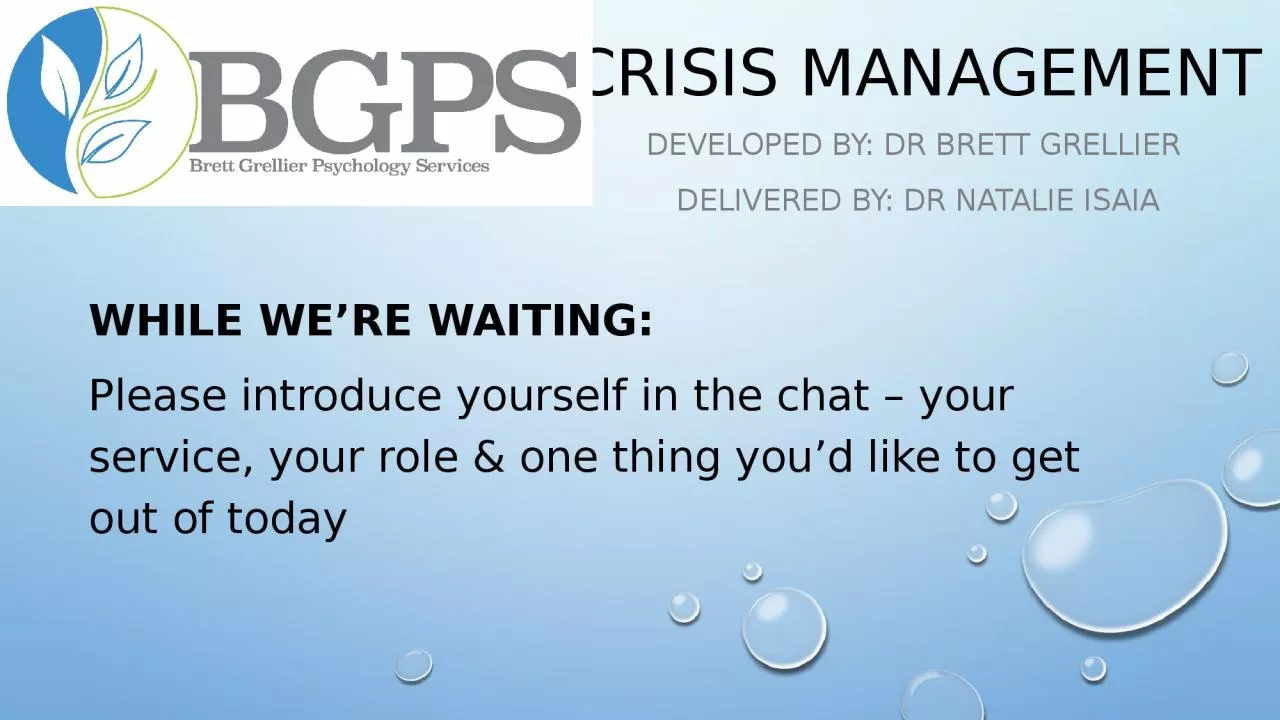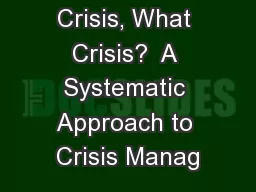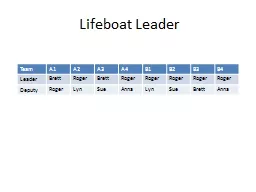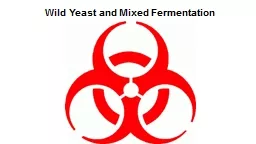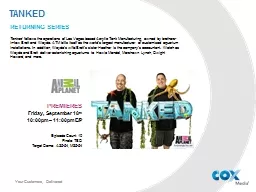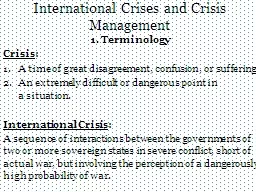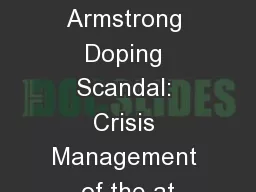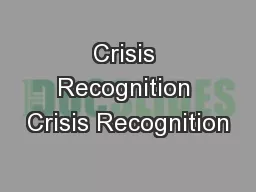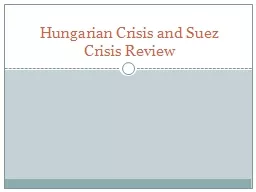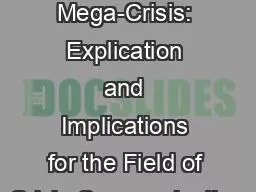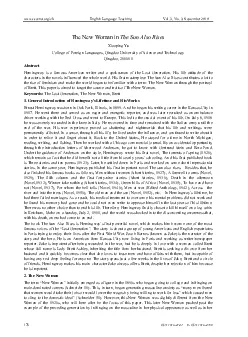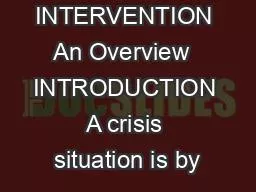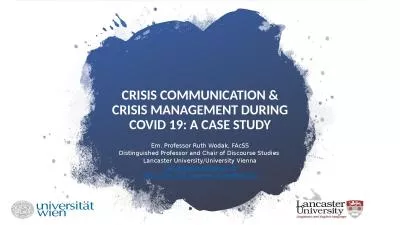PPT-Crisis Management Developed by: Dr Brett
Author : maisie | Published Date : 2022-06-20
Grellier Delivered bY DR Natalie Isaia WHILE WERE WAITING Please introduce yourself in the chat your service your role amp one thing youd like to get out of
Presentation Embed Code
Download Presentation
Download Presentation The PPT/PDF document "Crisis Management Developed by: Dr Brett" is the property of its rightful owner. Permission is granted to download and print the materials on this website for personal, non-commercial use only, and to display it on your personal computer provided you do not modify the materials and that you retain all copyright notices contained in the materials. By downloading content from our website, you accept the terms of this agreement.
Crisis Management Developed by: Dr Brett: Transcript
Download Rules Of Document
"Crisis Management Developed by: Dr Brett"The content belongs to its owner. You may download and print it for personal use, without modification, and keep all copyright notices. By downloading, you agree to these terms.
Related Documents

